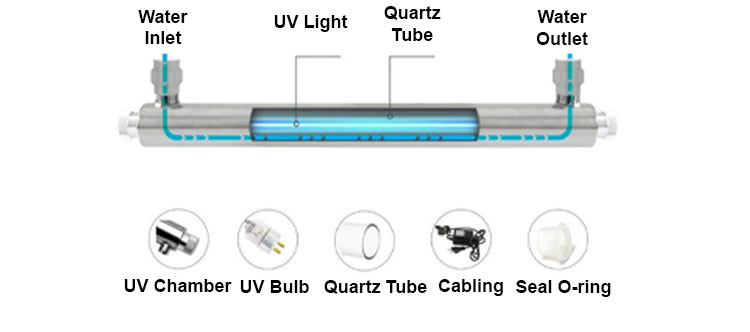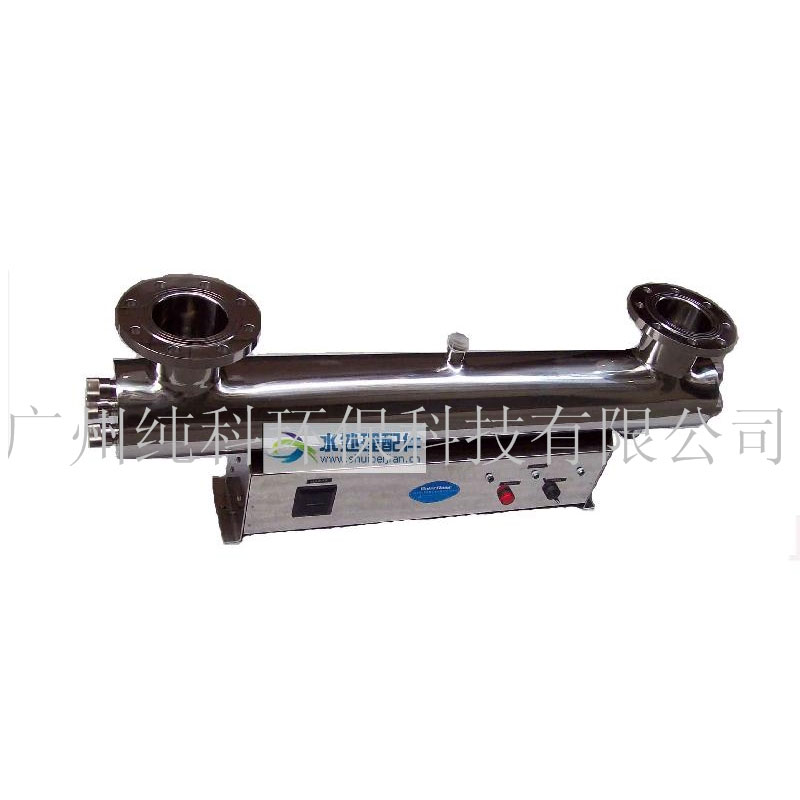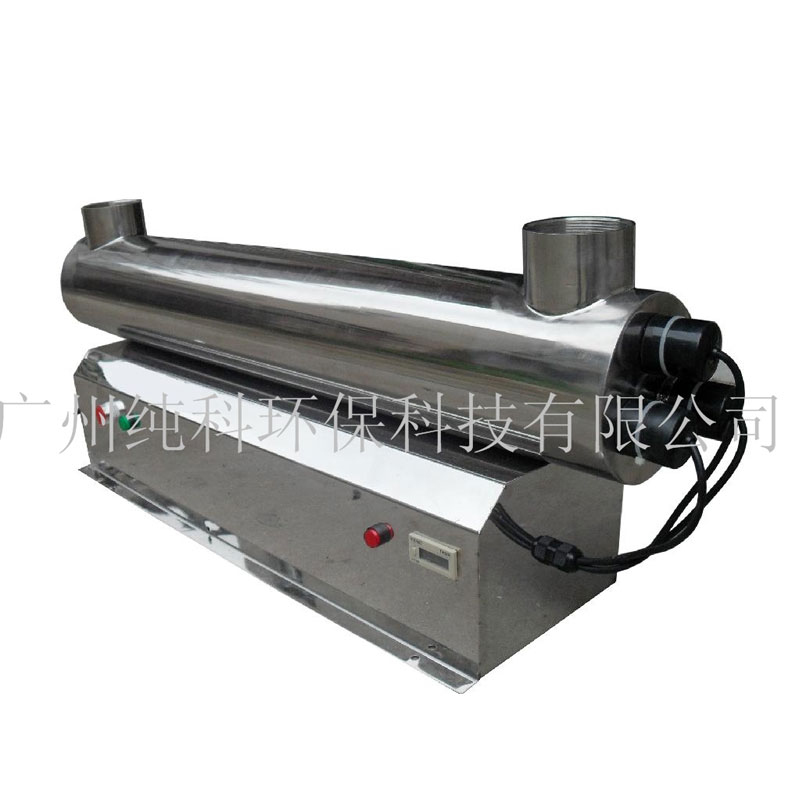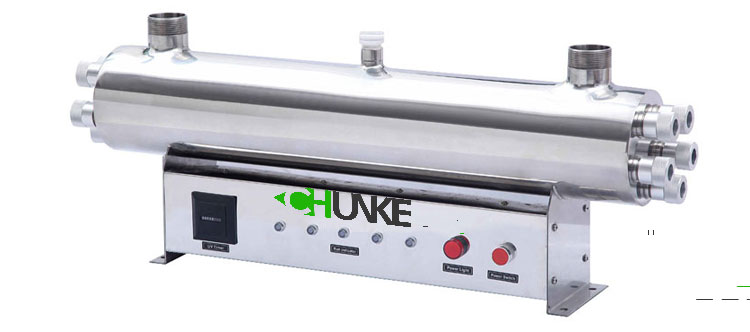Can ultraviolet light be used for water treatment?
Against the backdrop of increasing global water shortage and water pollution problems, finding efficient and environmentally friendly water treatment technology has become a common goal for scientists and engineers from all over the world. Ultraviolet (UV) disinfection technology has gradually emerged in the field of water treatment due to its advantages such as high efficiency, no chemical residue, and environmental protection.
So, can ultraviolet light be used for water treatment? This article will discuss in detail the application, principle, advantages and limitations of ultraviolet light in water treatment.

What is the principle of ultraviolet disinfection?
Ultraviolet light is an electromagnetic wave with a wavelength range of 10 to 400 nanometers (nm). Ultraviolet disinfection technology mainly uses the UV-C spectrum with a wavelength between 200 and 300 nanometers. Ultraviolet light in this band has a strong bactericidal effect. The specific principles are as follows:
1. Destroy the DNA and RNA of microorganisms: UV-C light can penetrate the cell wall of microorganisms, destroy their DNA and RNA structures, and make them lose their ability to reproduce and infect.
2. Cause photochemical reactions: The energy of ultraviolet light is sufficient to trigger photochemical reactions, generate free radicals, and further destroy the cell structure of microorganisms.
This physical disinfection method does not require the addition of any chemical agents, will not produce secondary pollution, and has a broad-spectrum bactericidal effect, which can effectively inactivate bacteria, viruses, protozoa and algae.

What are the applications of ultraviolet light in water treatment?
Ultraviolet disinfection technology is widely used in water treatment, mainly including drinking water treatment, sewage treatment, industrial wastewater treatment, aquaculture and swimming pool disinfection. The specific introduction is as follows:
1. Drinking water treatment:
In the process of drinking water treatment, ultraviolet disinfection is widely used to remove pathogenic microorganisms and ensure water quality safety. Ultraviolet disinfection systems are usually installed at the outlet of water plants. Through ultraviolet irradiation, bacteria, viruses and other microorganisms in the water are quickly inactivated.
2. Sewage treatment:
In sewage treatment plants, ultraviolet disinfection is used as a terminal disinfection technology for the disinfection of treated effluent. Compared with traditional chlorine disinfection, ultraviolet disinfection has the advantages of no harmful by-products and easy operation, so it has been widely used in many sewage treatment plants.
3. Industrial wastewater treatment:
In some high-demand industrial wastewater treatment processes, such as pharmaceutical, electronics, food and beverage industries, ultraviolet disinfection technology is used to remove pathogens in wastewater due to its high efficiency and environmental protection characteristics, ensuring the safe discharge or reuse of wastewater.
4. Aquaculture and swimming pool disinfection:
The application of ultraviolet disinfection technology in aquaculture and swimming pool disinfection is also very common. Ultraviolet rays can effectively control pathogenic microorganisms in water, reduce the incidence of diseases in aquatic animals, and improve breeding efficiency; in swimming pools, ultraviolet disinfection can avoid skin irritation and odor problems caused by traditional chlorine disinfection, and enhance the swimming experience.

Composition and working principle of ultraviolet disinfection system
A complete ultraviolet disinfection system usually includes components such as ultraviolet lamps, reactors, quartz sleeves and control systems. Its working principle is as follows:
1. Ultraviolet lamp: Ultraviolet lamp is the core component of ultraviolet disinfection system, usually using low-pressure mercury lamp or medium-pressure mercury lamp. The ultraviolet output of low-pressure mercury lamp is mainly concentrated in 254 nanometer wavelength, which has a high bactericidal effect; medium-pressure mercury lamp can output multiple wavelengths of ultraviolet rays, and the bactericidal effect is broader.
2. Reactor: The reactor is the main workplace of the ultraviolet disinfection system. When the water flows through the reactor, it is sterilized by ultraviolet radiation. The design of the reactor needs to consider fluid mechanics and optical principles to ensure that the water flows evenly and the ultraviolet radiation is sufficient.
3. Quartz sleeve: The ultraviolet lamp is encapsulated in a quartz sleeve. The quartz sleeve has high light transmittance and can effectively transmit ultraviolet rays while protecting the ultraviolet lamp.
4. Control system: The control system is used to monitor and adjust the operating status of the ultraviolet disinfection system, including the start and stop of the ultraviolet lamp, ultraviolet intensity monitoring, and water flow control in the reactor.

What are the advantages of ultraviolet disinfection technology?
Ultraviolet disinfection technology is favored by more and more water treatment projects due to its significant advantages. Its main advantages are: efficient sterilization, no chemical residue, simple operation, instant sterilization, and wide adaptability.
1. Efficient sterilization: Ultraviolet disinfection has a broad-spectrum sterilization effect, can effectively inactivate various bacteria, viruses and protozoa, and has a high sterilization rate.
2. No chemical residue: UV disinfection does not require the addition of any chemical agents, will not produce chemical residues or harmful byproducts, and is environmentally friendly and safe.
3. Easy operation: The UV disinfection system has a simple structure, easy operation and maintenance, and does not require complex operating techniques.
4. Instant sterilization: UV disinfection is a physical disinfection method that can sterilize instantly and does not require a long reaction time.
5. Wide adaptability: UV disinfection technology is suitable for various water qualities and is widely used in different water treatment fields such as drinking water, sewage, and industrial wastewater.

What are the disadvantages of UV disinfection technology?
Although UV disinfection technology has many advantages, there are also some disadvantages in practical applications that need to be considered and solved comprehensively.
1. Water quality influence: Suspended matter, turbidity, and organic matter in water will affect the penetration of ultraviolet rays and reduce the disinfection effect. Therefore, in water with high turbidity or high organic matter content, pretreatment is required to improve the UV disinfection effect.
2. Equipment maintenance: UV lamps and quartz sleeves need to be cleaned and replaced regularly to ensure the UV output intensity and disinfection effect. Especially in hard water areas, quartz sleeves are prone to scaling and need to be removed regularly.
3. No lasting disinfection effect: UV disinfection is an immediate disinfection method and cannot provide continuous disinfection protection. Therefore, in some applications, it is necessary to combine other disinfection methods, such as chlorine disinfection, to ensure continuous microbial control.
4. High initial investment: Compared with traditional chemical disinfection methods, the initial investment of UV disinfection system is higher, and the cost of equipment procurement, installation and operation and maintenance needs to be considered.
Conclusion on whether UV can be used for water treatment
Ultraviolet disinfection technology has been widely used in the field of water treatment due to its advantages such as high efficiency, environmental protection and safety. From drinking water treatment to sewage treatment, to industrial wastewater treatment and aquaculture, UV disinfection technology plays an important role. However, there are also some limitations in the application of UV disinfection technology, and it is necessary to reasonably design and operate the disinfection system in combination with specific water quality and treatment requirements.




